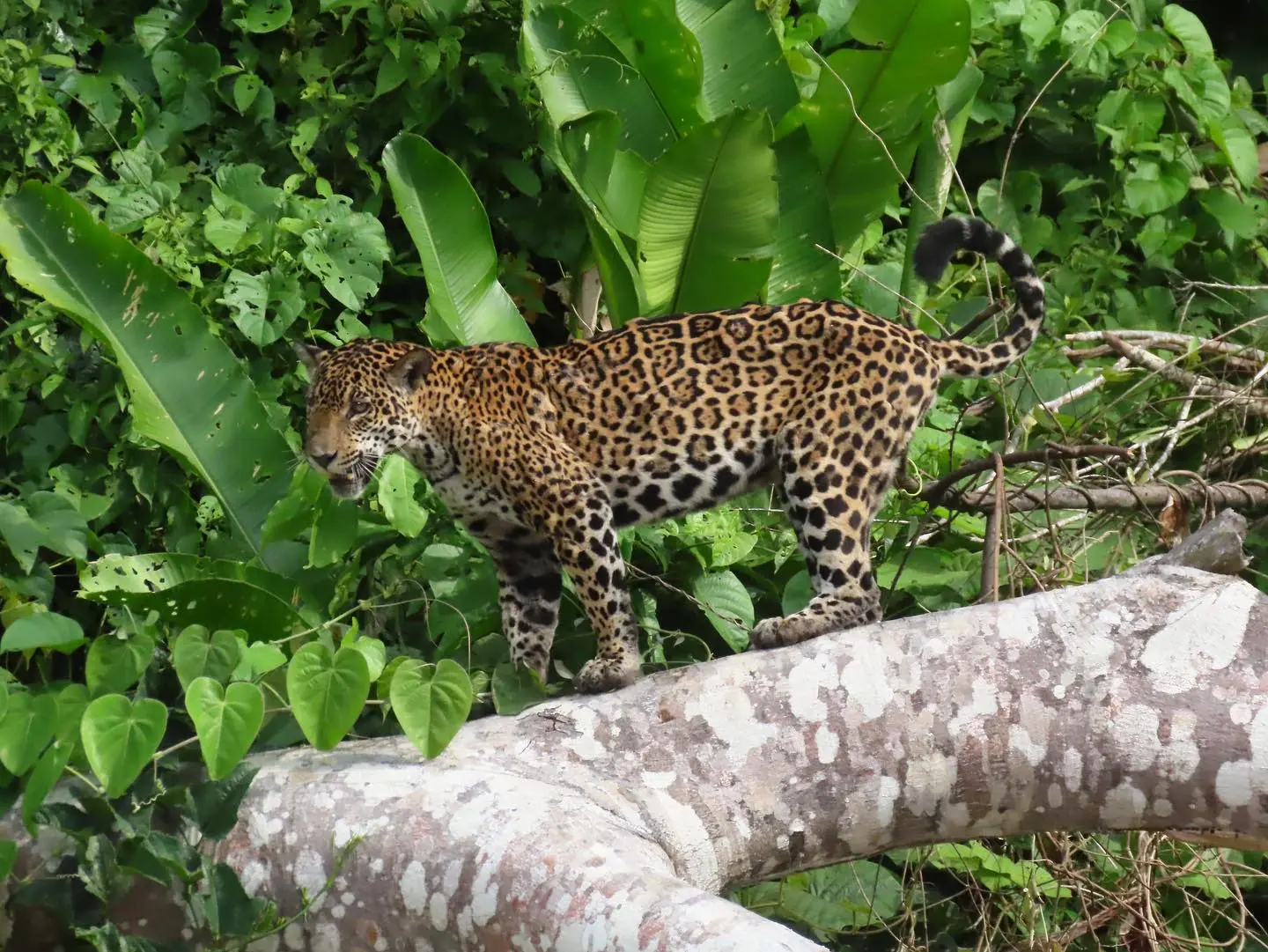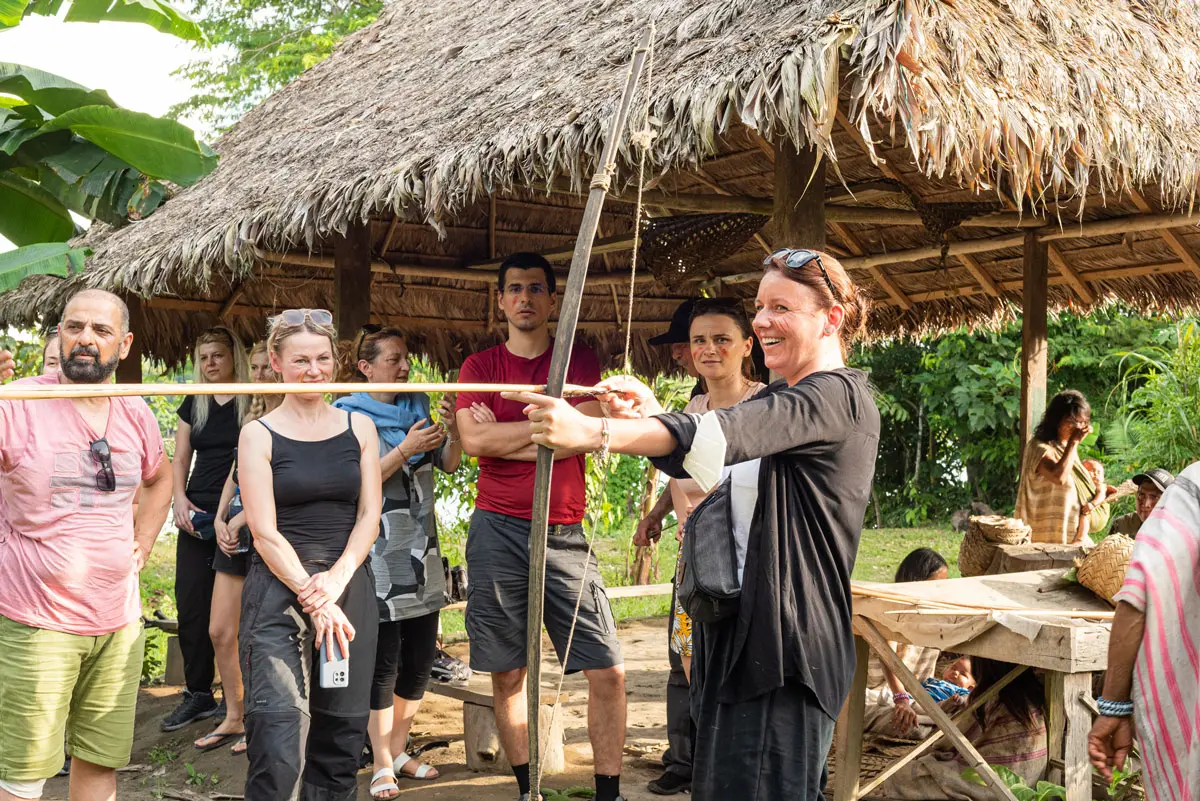Tambopata tours are gaining popularity among nature enthusiasts and researchers alike, drawn by the region’s diverse ecosystems. Spanning an impressive area, the Tambopata National Reserve is home to thousands of species of birds, mammals, reptiles, amphibians, and plants. It is a living testament to the rich complexity of the rainforest ecosystem.
The Tambopata National Reserve is a biodiversity hotspot, showcasing the dynamic interactions within an ecosystem teeming with life. Its varied habitats, from lush forests to tranquil rivers, support an incredible array of species. This biodiversity is not only a wonder to behold but also plays a crucial role in maintaining ecological balance. Conservation efforts in the region aim to protect this diversity, ensuring the rainforest remains a sanctuary for future generations.
For bird enthusiasts, Tambopata is nothing short of paradise. The reserve is home to over 600 species of birds, making it a prime destination for birdwatching. From the vibrant macaws to the elusive harpy eagle, the diversity of avian life is staggering. Tours often include specialized birdwatching expeditions, where expert guides help visitors spot and identify these feathered wonders in their natural habitat.
The plant life in Tambopata is as varied and fascinating as its fauna. The rainforest is a living laboratory of medicinal plants, some of which have been used by indigenous communities for centuries. Visitors can learn about these plants’ traditional uses and their importance in modern medicine. The towering trees and lush undergrowth create a verdant tapestry that supports a myriad of life forms, emphasizing the interconnectedness of the ecosystem.

The Tambopata Research Center is renowned for its proximity to the world’s largest known clay lick, where hundreds of macaws and parrots gather to feed on the mineral-rich clay. This phenomenon offers a spectacular sight and an excellent opportunity for visitors to capture breathtaking photos and videos.
The clay lick is a unique natural feature that attracts wildlife in droves. The mineral-rich clay provides essential nutrients to the birds, helping them detoxify the seeds and fruits they consume. Watching the vibrant macaws and parrots flock to the clay lick is a breathtaking spectacle, offering insights into the behaviors and dietary needs of these colorful creatures.
Beyond the avian wonders, Tambopata hosts a range of iconic mammals. Jaguars, elusive yet awe-inspiring, roam the dense forests, while capybaras, the world’s largest rodents, are frequently spotted near water bodies. The presence of giant otters in the rivers adds another layer of fascination, as these social creatures engage in playful antics that delight observers.
The rainforest’s moist environment is ideal for a wide variety of amphibians and reptiles. Frogs, with their vibrant colors and unique calls, contribute to the rainforest’s rich soundscape. Snakes and lizards, expertly camouflaged, reveal themselves to keen-eyed observers. These creatures, though often overlooked, play crucial roles in maintaining the ecological balance of the rainforest.

The Tambopata Research Center provides visitors with an authentic jungle experience, combining adventure with education. Guided tours and expeditions are designed to deepen understanding of the rainforest’s ecological significance while ensuring minimal impact on the environment.
Embark on guided nature walks through the dense rainforest trails, where experienced guides share insights into the intricate relationships between flora and fauna. These treks offer an intimate view of the forest floor and canopy, revealing the hidden wonders of Tambopata’s wildlife and plant life.
Nature walks are carefully curated to provide educational insights into the rainforest’s delicate ecosystems. Guides often share fascinating facts about the symbiotic relationships between different species, enhancing visitors’ appreciation for the interconnected web of life.
Exploring the rivers and lakes of Tambopata by canoe offers a unique perspective on the rainforest. These expeditions allow visitors to glide silently along the waterways, observing wildlife such as caimans, turtles, and various fish species. Canoeing provides a peaceful way to connect with nature, offering a chance to witness the subtle nuances of the aquatic ecosystem.
The rainforest comes alive at night, offering a completely different perspective on the ecosystem. Nighttime expeditions allow visitors to explore the jungle under the cover of darkness, encountering nocturnal creatures such as frogs, insects, and elusive mammals. The sounds of the rainforest at night create an unforgettable symphony that resonates with the rhythm of the wild.
Nighttime expeditions are guided by experts who help visitors navigate the forest’s dark trails safely. The experience is both thrilling and educational, as guides point out nocturnal species and share insights into their behaviors.

The Tambopata Research Center is not just a hub for ecotourism; it is also a vital research facility dedicated to the study and conservation of the Amazon rainforest. Researchers at the center conduct critical studies on biodiversity, climate change, and sustainable practices, contributing valuable knowledge to global conservation efforts.
At the forefront of ecological research, the Tambopata Research Center employs cutting-edge technology to study the rainforest. From drone surveys to bioacoustic monitoring, researchers gather data that help deepen our understanding of this complex ecosystem. This research not only informs conservation strategies but also contributes to global scientific knowledge about tropical rainforests.
The center is deeply committed to conservation and sustainability, implementing practices that protect the environment and support local communities. By promoting responsible tourism, the Tambopata Research Center ensures that future generations can continue to enjoy and learn from the rainforest’s splendor.
Sustainability initiatives at the center include renewable energy use and waste reduction practices. These efforts reflect a commitment to minimizing human impact on the environment, serving as a model for sustainable operations in sensitive ecological areas.
The center actively engages with nearby indigenous communities, creating partnerships that foster mutual respect and understanding. Through educational programs and collaborative projects, the center supports local efforts to preserve traditional knowledge and sustainable livelihoods.
Community engagement initiatives include workshops on sustainable agriculture and crafts, empowering locals with skills that promote economic independence. These programs also help preserve cultural heritage, ensuring that traditional practices are passed down to future generations.

Before embarking on your journey to the Tambopata Research Center, it is essential to prepare adequately for the unique challenges of rainforest exploration. Here are some practical tips to enhance your experience:
Engaging with knowledgeable guides transforms a visit to Tambopata into an educational journey. Their insights into the rainforest’s biodiversity and conservation challenges add depth to the experience.
Visitors to the Tambopata Research Center often leave with glowing reviews, praising the knowledgeable guides, the breathtaking wildlife encounters, and the commitment to conservation. The center’s dedication to sustainable tourism ensures that each visit contributes to the protection of the rainforest and its inhabitants.
Reviews highlight the center’s role in fostering a deeper appreciation for the natural world. Visitors frequently commend the personalized attention and the unforgettable experiences that highlight the rainforest’s beauty and complexity.

The Tambopata Research Center is a beacon of biodiversity, offering a gateway to one of the most pristine and biologically rich regions on the planet. Whether you are a seasoned explorer or a curious traveler, a visit to this remarkable destination promises an unforgettable encounter with nature’s grandeur.
By choosing to embark on a Tambopata adventure, you are not only experiencing the wonders of the rainforest but also supporting vital conservation efforts that aim to preserve this unique ecosystem for future generations. So, pack your bags, set your spirit of adventure free, and prepare to be captivated by the extraordinary biodiversity of Tambopata.
[…] living laboratories. It provides opportunities to study everything from climate change impacts to biodiversity […]
[…] The toucan’s role in seed dispersal highlights their importance in maintaining the health and diversity of the rainforest ecosystem. By spreading seeds, they facilitate the growth of new plants, ensuring the continuous renewal of the forest’s rich biodiversity. […]